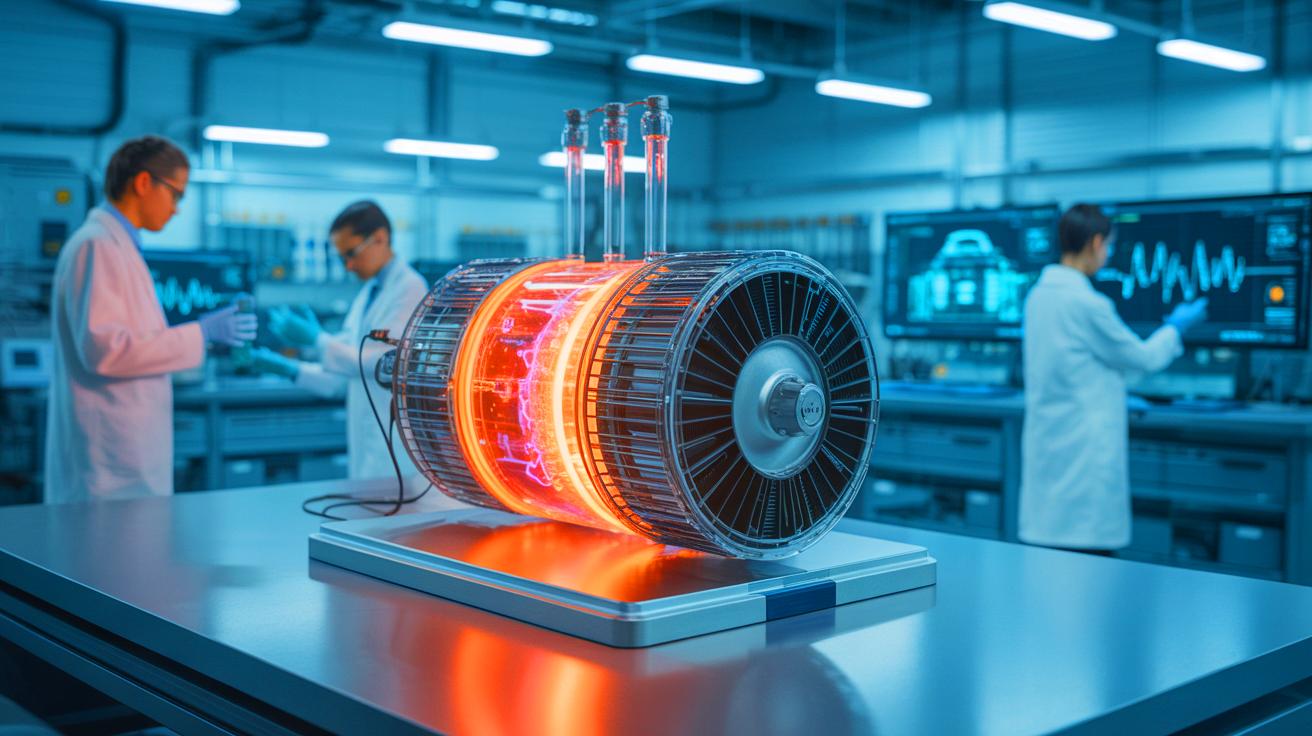Revolutionizing Energy Generation: WVU Engineers Unveil Advanced Fuel Cell Technology
Key Ideas
- WVU engineers developed a groundbreaking fuel cell that efficiently generates power, stores energy, and produces hydrogen, reshaping the energy landscape.
- The new fuel cell design enhances stability under high temperatures and steam, offering improved durability and efficiency over previous models.
- This technology can use saltwater or low-quality water, reducing the need for purified water, and demonstrated exceptional durability over 5,000 hours of operation.
- The scalability of this technology for industrial applications holds great promise, potentially revolutionizing energy generation and storage methods.
West Virginia University engineers have introduced a revolutionary fuel cell that not only generates power and stores energy efficiently but also produces hydrogen. This innovative development aims to transform the energy sector by enabling seamless integration of renewable sources like solar and wind. The fuel cell's ability to operate under high temperatures and steam conditions makes it a robust solution for the modern energy landscape, enhancing grid adaptability.
The protonic ceramic electrochemical cells (PCECs) developed by the WVU team provide a versatile solution for the U.S. electrical grid, particularly in managing intermittent energy sources. With a novel conformally coated scaffold design, these cells exhibit enhanced stability and durability, overcoming previous limitations in industrial settings. By incorporating barium ions for improved proton conduction and water retention, and utilizing nickel ions for structural stability, the fuel cell design ensures better performance and scalability.
One notable feature of this technology is its capability to operate with saltwater or low-quality water, reducing the reliance on purified water and expanding its potential applications. The fuel cells demonstrated exceptional durability, surpassing previous models by operating continuously for over 5,000 hours, producing electricity and hydrogen. This longevity and flexibility in switching between modes make them an invaluable asset for stabilizing energy supply in grids dependent on renewable sources.
The WVU engineers' advancements pave the way for industrial scaling of PCECs, with the technology proving feasible for large-scale production. The cells maintain strength and stability under intense conditions, indicating promising prospects for widespread adoption across various energy sectors. Published in Nature Energy, the research findings underscore the team's dedication to advancing energy technology and contributing to the global transition to sustainable energy solutions. This breakthrough heralds a new era in energy generation and storage, with the potential to reshape how power is generated and utilized on a global scale.
